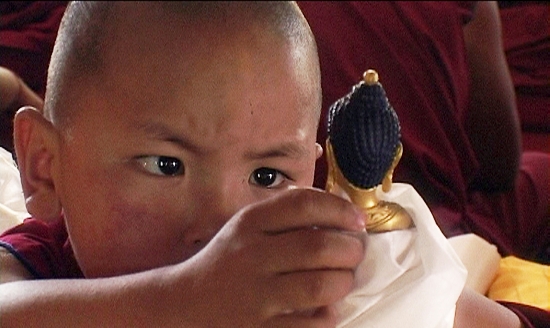BOOK REVIEW
It is absolutely important for the child to see beyond prescribed textbooks. And particularly when a great historian like Professor Bhattacharya communicates with the child, history acquires a new meaning; it finds its soul. Let the teachers and parents share this extraordinary tale of a great soul with their children.
Sabyasachi Bhattacharya, Buddha for the Young, National Book Trust, New Delhi, 1996 (Reprint, 2008)
Ramya Devi is working in the field of education, based in Chittor district.

Schools teach math, science, social science and language. It is not taught for the joy of learning. Knowledge is always quantified, measured and compared. Even the textbooks hardly provoke any sense of wonderment and joy. It is perceived as a means to score marks, and therefore even the biographies of great people given in the textbooks lose their true significance. They are meant to memorize certain facts. They stand important only until the final exams. Yes, this sort of discrete/factual knowledge may have its necessity, but the knowledge we gain out of our life experiences is of greater significance. In this system of memorizing facts and achieving marks, we have lost the art of knowing oneself and the mysteries of life.
At this juncture, the book Buddha for the Young by Sabyasachi Battacharya has immense possibilities to provoke certain sensibilities among the young children. The book promises to establish connection with oneself and links us to the deepest quest of our life.
Even though the author says that ‘this is not a book about Buddhism’, he does not forget to remind us that ‘it is about Buddha’. He also reminds us that Buddha’s life itself is the message, and his teachings are not separate from his life. There is an interesting narration about ‘what drove Buddha out of his home and made him a wandering hermit.’ Old age, sickness and death are something that we see around every day; but what was it that made Buddha realize something deeper in it?
Imagine the final encounter. It was time for Buddha to leave the world. And Ananda—one of his close disciples—began to grieve and cry. However, with absolute calmness Buddha replied: ‘Do not grieve and lament. Haven’t I told you already that all that is dear to you will change, will depart, will become other than what it is?’ When the modern medicine is obsessed with its urge to conquer death, what does Buddha’s reply signify?
See the significance of the book in a world which has become the ‘victim of consumerism’. Buddha reminds us about the beauty of the inner world. Even after great discoveries and development of modern technologies suffering has not come to an end. In addition, we are destroying the nature around us. He suggests that it is only the ‘Middle Path between extreme asceticism and love of luxury, between extreme self- deprivation and self-indulgence’ that can bring harmony.
The world has become a place filled with violence and hatred. Unlike the olden days when family and kinship ties kept us together, people now are isolated and lonely. We do not know our neighbors. In these difficult times, a book of this kind gives us the hope to reconnect with the world and oneself. ‘To men and women who no longer have a feeling of belonging to a community’, as the author articulates sharply, ‘Buddha speaks to their lonely minds’.
‘You have to look within yourself for the ultimate light’; and Buddha’s own life experiences stand as an example. Thus unlike many other religious preachers, he leaves the responsibility of finding the answers to oneself. He wants everyone to put sincere effort to understand life and ultimately put an end to sorrow and suffering.
In this small book—written with great clarity and lucidity— the author tries to connect directly to the children. Even though the book talks about the life of Buddha who lived 2500 years ago, it attempts to connect to our modern life meaningfully. He addresses to the young readers to decide for themselves the relevance of Buddha in making sense of their world.
Siddhartha’s deepest quest to bring an end to suffering made him the Buddha. Where are we?








